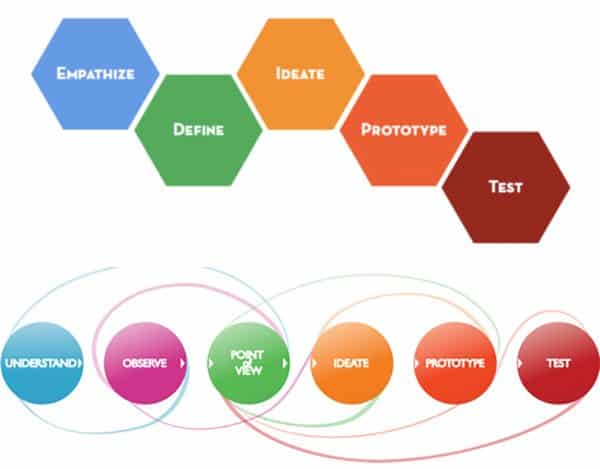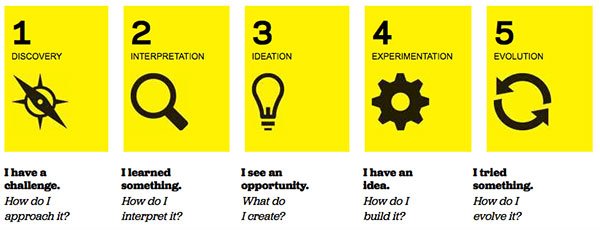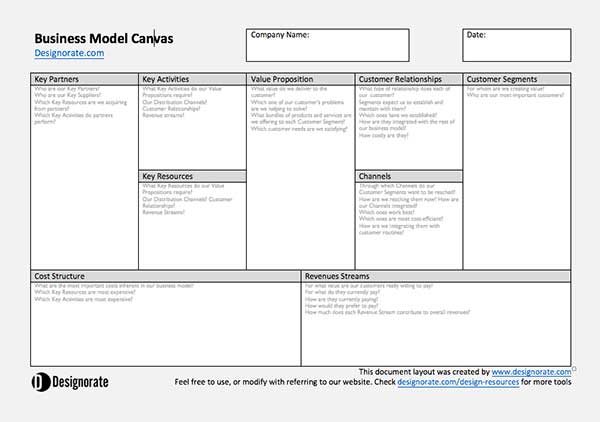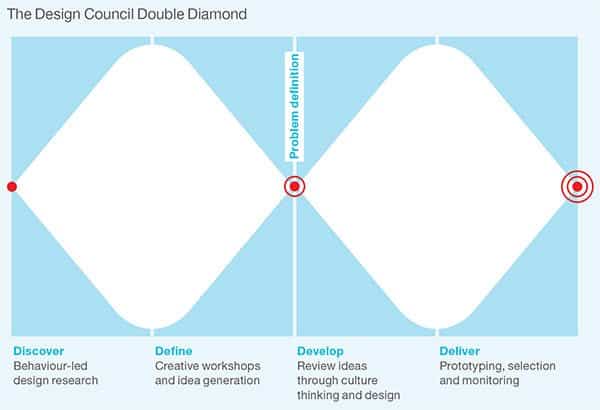Introduction
Technology Education in Primary School This study focuses on the practices and potential of technology education in Finnish primary schools, where technology education is a compulsory school subject. As in many other countries, the content of technology education is currently being discussed and debated in Finland. For example, Autio (1997), Kananoja (1997), Kankare (1997), Kantola (1997), Lind (1996), and Parikka and Rasinen (1993) argue in their studies that more up-to-date technological content is needed.Finland has a long tradition of teaching practical school subjects. Since 1866, educational handwork (sloyd) has been a compulsory school subject for both boys and girls (Kantola, 1997). Finnish technology education, called "technical work" in the national curriculum guidelines, is a school subject in which pupils design and make products by using different materials, machines, processes, techniques and tools (e.g. Kankare, 1997). This emphasis on designing and making is an essential part of Finnish technology education. It is believed that such experiences develop pupils' knowledge, personal qualities, and psychomotor skills (Peltonen, 1995; Suojanen, 1993). As with the traditional (sloyd) programs that preceded it, there is general belief that the design and build approach used in contemporary technology education programs enhances the pupils' creativity, dexterity, diligence, initiative, problem solving, self-image, and preparation for work.
As technology education has evolved in Finland, more content has been introduced, including such areas as electricity, electronics, machinery, and computers. Construction kits for teaching control technology have also been adopted. In addition, technology education classes now offers pupils the opportunity to service and repair their bicycles, mopeds, and other technical equipment. These areas, combined with the more traditional sloyd (craft and design), have made Finnish technology education more diverse than in other Scandinavian countries.
In informal discussions among teachers and teacher educators, there seems to be a general feeling that technology education in Finnish primary schools is out of date, emphasizing older technological processes such as the making of wooden and metal items. Even though technology education has been updated to an extent, there is a general feeling that there should be more connection to the modern technological world than that which exists presently. The technological concepts of communication, construction, energy, manufacturing, and transportation are rarely reviewed from ecological, economical, cultural, and social viewpoints. The activities in which the pupils are engaged determine the kinds of technological knowledge and processes they learn. These activities must therefore be upgraded.
The Finnish School System The Finnish comprehensive school provides compulsory basic education to pupils between the ages of 7 and 16. It is divided into a six-year lower level (grades 1-6), which corresponds internationally to primary education, and a three-year upper stage (grades 7-9), corresponding to lower secondary education. This study focused on technology education at the primary school level, where pupils are between 7 and 13 years old.
In the third grade of the primary school, it is compulsory that all pupils study technology education. After that they have to choose either technology education or textile work. As one might expect, boys usually choose the former and girls choose the latter. Pupils who have chosen technology education study it for at least two hours a week from third through sixth grades.
In Finnish primary schools, technology education is usually taught by regular classroom teachers. Today these teachers must hold a master's degree in education and most have studied technology education as part of their teacher preparation program. A separate technology education room is provided for instruction, with an ideal maximum of 16 students in the facility at one a time.
The national curriculum reform in 1994 gave schools noticeably more freedom in developing their own curricula (Kohonen & Niemi, 1996). The national core curriculum and curricular guidelines are very vague, providing only brief outlines. Though this allows for local flexibility, it also increases the diversity in the way in which technology education is taught from one school to another. In the latest national core curriculum, the main emphasis is on the "idea-to-product" process, with the pupil fully engaged in designing (Opetushallitus, 1994). Although, the designing and making of products remains as the central part of the national curriculum guidelines, the need for a broader technological understanding and capability is also mentioned.
Research Questions
The research questions of the study are summarized as follows:- What kinds of teaching practices are there in technology education in primary school? This question was intended to elicit information, for example, on the extent of computer usage in technology education now and that expected in the future, the extent of cooperation with local industry, and the kinds of tasks performed by students in technology education.
- What goals of technology education are accomplished in primary school? This question focused on the extent to which the goals of the national curriculum were being realized. This included product design-based work and the extent to which students were copying designs rather than actually developing designs themselves. Information on the teaching methods used to teach design was also investigated.
Method
Instrument The research questions were addressed by means of a survey instrument. The main part of the instrument was modeled after instruments used in two other technology education studies (see Alamäki, 1997; Kankare, 1997). These initial instruments were shown to be acceptably valid. There was no reason to believe that the teachers would not answer truthfully. They answered anonymously and it is plausible that they viewed the questionnaire as a way for them to contribute to the development of technology education. The majority of the questions were close-ended, requiring responses on a five-point scale with the following descriptors: "never," "seldom," "some extent," "often," "very often." The responses were assigned numerical values from 1 (never) to 5 (very often). A few open-ended questions were also included.Sample The study was conducted in the Finnish provinces of Oulu and Varsinais-Suomi. The former lies in northern Finland and the latter in the southwestern region. The instrument was mailed to a sample of 300 primary schools, stratified by geographic region, in the spring of 1997. One technology education teacher at each school was selected as the contact person. At the beginning of the following school year, another copy of the questionnaire was sent to non-respondents. After these two mailings, 212 (70.7%) completed questionnaires were received. By geographic strata, 104 of the responding teachers were in city schools, 28 in provincial towns, and 80 in rural areas. The data showed that the vast majority (205) of the teachers in the study were male.
The average age was 41.1 years (SD=10.05). The average amount of teaching experience was 15.8 years (SD=10.22 years), with 14.6 years (SD= 9.92) spent teaching technology education. On average, the respondents taught technology education 5.3 hours (SD=4.79) per week. Twelve of the teachers held a degree in technology education and all of the respondents except five had a bachelor's or master's degree in education. Ten of the teachers worked as technology subject teachers, whereas the remainder of them worked as regular classroom teachers. All had studied technology education in the teacher preparation program since such study is compulsory.
Procedure The close-ended questions were analyzed quantitatively by using frequencies and averages. Chi-square testing, one-way ANOVA and Pearson correlation analysis were also applied to selected responses. The "copying teaching method" and the "design teaching method" were compared using a dependent sample t-test. The reliability coefficients of the variables concerning the goals of teaching and the teaching method ranged between .61 and .83 and were deemed acceptable. The open-ended questions were also analyzed quantitatively by using descriptive statistics, grouping similar responses together.
Results
Practices in Technology Education The first section of the instrument focused on the use of computers in teaching technology education now and in the future. It included two close-ended and one open-ended questions. Analysis revealed that 15% of the respondents had the potential of using a computer in technology education and 32% felt that they would have this potential in the near future. There was not a statistically significant difference in the potential of using a computer among cities, townships and rural areas, either presently or anticipated in the future. The predominant use of computers in technology education was for drawing and planning. Use of the World Wide Web or software developed for educational purposes was rarely mentioned.Cooperation with local industry was examined with both closed-ended and open-ended questions. Nineteen percent of the respondents indicated that they have cooperated with local industry. In most cases, this involved the donation of materials or the provision of student field trips. Examples of the latter include visits to a sawmill, a fiberboard factory, and a fishing lure manufacturer. In some cases, the teachers also received expertise from the local industry. No differences were found among geographic strata.
The study also investigated the kinds of activities used in technology education and their suitability to students at the primary level. Respondents were asked to rate nine selected activities. A description of each activity was provided. For example, it was explained that in the activity "woodworking," wood was the primary material with which the students worked. Regarding electrical equipment, it said that this activity included such topics as transistors, IC-circuits, and construction kits for teaching electronics. Familiarity with technological equipment included such elements as exploring the functional principles of radios or computers; service and repair included topics such as the maintenance of students' bicycles and other equipment. These data are reported in Table 1.
Table 1
Extent of Use of Selected Activities in Primary School Programs|
|
|
|
|
|
|
|||
| f (%) | f (%) | f (%) | f (%) | f (%) |
|
|
|
|
| Woodwork | 1(1) | 0(0) | 11(5) | 92(44) | 107(51) | 211(100) | 4.44 | .64 |
| Service and Repair | 11(5) | 46(22) | 111(53) | 33(16) | 9(4) | 210(100) | 2.92 | .87 |
| Metal Work | 10(5) | 60(29) | 100(48) | 36(17) | 4(2) | 210(100) | 2.83 | .84 |
| Plastic Work | 14(7) | 60(29) | 88(42) | 45(21) | 3(1) | 210(100) | 2.82 | .89 |
| Electro-mechanical equipment | 20(10) | 78(37) | 88(42) | 22(10) | 3(1) | 211(100) | 2.57 | .96 |
| Electronic equipment | 44(21) | 55(26) | 75(36) | 31(15) | 5(2) | 210(100) | 2.51 | 1.05 |
| Familiarity with technological equipment | 124(59) | 52(25) | 26(12) | 5(2) | 2(1) | 209(100) | 1.61 | .87 |
| Construction kits | 135(64) | 51(24) | 20(10) | 3(1) | 2(1) | 211(100) | 1.51 | .80 |
| Internal-combustion engines | 131(62) | 56(27) | 18(9) | 5(2) | 0(0) | 210(100) | 1.50 | .75 |
The teachers generally felt that all of the nine prescribed activities could be suitable for technology education at the primary level (see Table 2). Woodworking was considered the most suitable (and the most popular); 72% of teachers stated that it is a very well suited activity for technology education. In addition, the teachers felt that activities such as service and repair, electronic equipment, electric-mechanical equipment, plastic work, and metalwork were well suited to the primary level, although they did not teach them often. The teachers, however, supportive of the suitability of activities related to techno-logical equipment and internal-combustion engines. When age, education, the location of school, and work experience were considered, it was found that there were not any statistically significant differences that had relevance to the study.
Table 2
Suitability of Selected Activities to Primary Level Technology Education Level of Suitability|
|
|
|
|
|
|
|||
| f (%) | f (%) | f (%) | f (%) | f (%) |
|
|
|
|
| Woodwork | 0(0) | 1(1) | 9(4) | 48(23) | 150(72) | 208 | 4.67 | .58 |
| Service and Repair | 0(0) | 7(3) | 54(26) | 87(42) | 59(29) | 207 | 3.96 | .83 |
| Electric-Mechanical Equipment | 1(1) | 8(4) | 56(27) | 96(47) | 45(22) | 206 | 3.85 | .89 |
| Plastic Work | 1(1) | 12(6) | 64(31) | 96(46) | 34(16) | 207 | 3.73 | .82 |
| Metal Work | 0(0) | 12(6) | 71(34) | 91(44) | 33(16) | 207(100) | 3.70 | .81 |
| Electronic equipment | 7(3) | 18(9) | 57(28) | 82(40) | 42(20) | 206 | 3.65 | 1.00 |
| Construction Kits | 8(4) | 16(8) | 87(42) | 72(35) | 22(11) | 205 | 3.41 | .92 |
| Familiarity with technical equipment | 24(12) | 65(32) | 74(36) | 31(15) | 11(5) | 205 | 2.71 | 1.03 |
| Internal-combustion engines | 27(13) | 65(32) | 74(36) | 29(14) | 9(4) | 204 | 2.65 | 1.02 |
The Finnish curriculum guidelines mention creativity, cultural heritage, environmental education, entrepreneur education, self-image, problem solving skills, social skills, and readiness for work life as the general goals of a comprehensive education. This study investigated how these general goals were manifested in technology education. The responding teachers were asked to describe the extent to which pupils' activities in technology education corresponded to the goals.
According to the results reported in Table 3, technology education focuses most on students' creativity. The development of problem-solving skills, self-image, cultural heritage, and social skills are also often associated with technology education. However, readiness for work life, environmental education, and entrepreneur education are associated to only a limited extent with technology education according to the responding teachers.
In addition to general goals, this study also considered activities related to product design. Product design strongly emphasizes creating products, such as that suggested in the "idea-to-product" processes mentioned earlier. Traditional product design-based work includes the development of manual dexterity, product planning, work safety, work education, and aesthetic education. The results indicated that manual dexterity was most central to the product design-based work. In addition, work education, work safety, and product planning were considered essential components. Aesthetics were considered to be a limited part of teaching and the pupils' work.
The study also included an assessment of the three dimensions of technological literacy as espoused by Dyrenfurth and Kozak (1991) and others: the utilization of technology, the evaluation of technology, and the appreciation of technology. The utilization of technology refers to the acquisition of the knowledge and skills necessary to use and make technological products and solutions. The evaluation of technology refers to the critical evaluation of the impact and consequences of technological processes. The appreciation of technology refers to understanding the outcomes of technological innovations as they relate to a higher standard of living. The data in Table 3 indicate that the respondents feel that technology education is most concerned with the utilization of technology and that the evaluation and appreciation of technology are of lesser significance.
Table 3
Educational Goals and Dimensions Realized Through Technology Education|
|
|
|
|
|
|
|||
| f (%) | f (%) | f (%) | f (%) | f (%) |
|
|
|
|
| Creativity | 1(1) | 3(1) | 53(25) | 113(54) | 41(19) | 211 | 3.90 | .73 |
| Problem solving skills | 0(0) | 14(7) | 61(29) | 114(54) | 20(10) | 209 | 3.67 | .74 |
| Student's self-image | 2(1) | 10(5) | 78(37) | 90(43) | 29(14) | 209 | 3.64 | .82 |
| Social Skills | 0(0) | 19(9) | 81(38) | 95(45) | 16(8) | 211 | 3.51 | .77 |
| Cultural heritage | 2(1) | 14(7) | 85(41) | 91(43) | 17(8) | 209 | 3.51 | .78 |
| Work life | 4(2) | 39(18) | 90(43) | 66(31) | 12(6) | 211 | 3.20 | .87 |
| Environment education | 8(4) | 57(27) | 104(49) | 39(18) | 4(2) | 212 | 2.88 | .82 |
| Enterprise education | 19(9) | 77(37) | 84(40) | 26(12) | 4(2) | 210 | 2.61 | .89 |
| Manual dexterity | 0(0) | 1(1) | 5(2) | 86(41) | 119(56) | 211 | 4.53 | .57 |
| Work education | 0(0) | 4(2) | 34(16) | 106(50) | 68(32) | 212 | 4.12 | .74 |
| Work safety | 0(0) | 1(1) | 39(18) | 118(56) | 54(25) | 212 | 4.06 | .68 |
| Product planning | 0(0) | 4(2) | 87(41) | 96(45) | 25(12) | 212 | 3.67 | .71 |
| Aesthetics | 1(1) | 16(7) | 90(42) | 99(47) | 6(3) | 212 | 3.44 | .70 |
| Utilization of technol. | 1(1) | 12(6) | 92(43) | 98(46) | 9(4) | 212 | 3.48 | .69 |
| Evaluation of technol. | 4(2) | 45(21) | 115(54) | 44(21) | 4(2) | 212 | 3.00 | .76 |
| Appreciation of technol. | 4(2) | 66(31) | 101(48) | 39(18) | 2(1) | 212 | 2.85 | .77 |
The Obstacles to the Development of Technology Education
The study investigated obstacles to developing technology education in primary education with both closed-ended and open-ended questions. The respondents indicated that the three most significant obstacles, in order, were:
- Lack of financial resources.
- Insufficient material on how to teach technology education.
- Lack of other accompanying resources.
The Development of Technology Education Perceptions about technology education in the future were also investigated in this study. An open-ended question asked the respondents how or in what direction they would like to see technology education change in the future. Over one-fourth of the respondents felt that program updating was the most important goal to pursue in the future for the development of technology education. Samples of the respondents' statements with some caveats included, "...modern technology must be included in the right amount in the curriculum in such a way that it does not become an end in itself" or "More technology should be generally forced into the comprehensive school. But it can not take away from the diminishing number of handwork specialization courses...people have a need to do work with their hands...".
Eighteen percent of the respondents felt that the making of products should continue in the future. Several connected this perception with the need to bolster the content as well. There seemed to be a strong sentiment about moving toward a changed program but not discarding critical elements of traditional programs. Examples of statements supporting this were:
- "I appreciate the teaching of handiwork tradition and the applying of technological integration...Therefore, teaching of technological understanding is already entitled to start from childhood."
- "The diversified use of different materials, new work methods, and technology should nonetheless be realized without losing traditional woodworking."
- "Generally more technology to the comprehensive school, but this may not take time from more and more important dexterity...".
- "In technology education the final product is also important. The subject may not only be going toward technological knowledge. The making of concrete articles is very rewarding for many kids...".
- "Certain basic skills, techniques and traditional tasks should be saved, but stressing technology education could be moved toward so-called new teaching of electronics."
Table 4
Goals for the Future Development of Technology Education (n=118)|
|
|
|
| More technological content |
|
|
| The making of products (handwork) |
|
|
| Diversification of Curriculum |
|
|
| Modernizing Curriculum |
|
|
| Creativity |
|
|
| Other |
|
|
| Total |
|
|
The study sought to determine teachers' perceptions of the word technology by asking them to write a definition for it. Due to the breadth of the responses, some of the definitions were placed in more than one category. These data are reported in Table 5.
Table 5
Teachers' Definitions of Technology (n=170)|
|
|
|
| Utilizing technical devices |
|
|
| Knowledge, skills, and means for doing different tasks |
|
|
| Technical devices and machines (artifacts) |
|
|
| Production process |
|
|
| Knowledge of how technical devices and machines work |
|
|
| Others |
|
|
| Total |
|
|
One third of the teachers defined technology in terms of human knowledge and capability relative to accomplishing tasks. Technology was seen as know-how, or "human capital," which helps humans satisfy their needs and wants. Examples of statements in this category are "the adapting of modern technical know-how for the needs of humans" or "an activity which is realized with the help of thinking and equipment in practice."
Nearly a quarter of the group thought of technology in terms of artifacts. Sample definitions include "devices and machines which help the work and activity of humans" and "today's high technology consumer products, such as mobile phones, computers, gauges, etc." Technology was understood as a production process by 15% of the responses. Included in the "other" response category were concerns about the elimination of existing content such as, "the killer of a traditional handwork...or at least a big threat" and "everything involving dexterity is technology."
Discussion
Woodwork is the most popular activity area in technology education in Finnish primary schools. Electricity and electronics tasks, plastic work, and service and repair are taught to a certain extent. Nonetheless, all of the activities listed in the study were considered suitable for technology education at the primary level except for those related to familiarity with technological equipment and internal-combustion engines. Computers are not yet used to a large extent in technology education, but use is expected to increase rather dramatically in the near future. There is evidence of substantial cooperation between teachers and industry. The biggest obstacle for the development of technology education is inadequate financial resources and the resultant lack of materials and equipment necessary to teach it.The age, education, and work experience of the teacher and the school location did not seem to be related to technology education practice. The traditional goals of Finnish technology education and the general goals of primary education are clearly manifested in technology education. The practical aspects of technological literacy were considered to be essential aspects of technology education. The design-based teaching method is more commonly used than the more antiquated and less educationally sound copying-based teaching method. It appears as though most of the teachers in primary schools understand the concept of technology from a perspective that encompasses more than just new technological artifacts or computers. The definitions of the term technology, in fact, seemed to match Mitcham's (1994) modes of technology. The study showed that the teachers felt that technology education should include more modern technological content while, at the same time, retaining traditional educational handwork.
Wood as an educational material has over 130 years of history in Finnish technology education, and it is still an appropriate material for design-based work. Teaching resources in school, for example, support the use of wood as a construction material. Significant learning experiences in technology, such as inventing or design, do not always require complicated tasks. The cognitive and affective processes that the activities of technology education evoke are more important than what the appearance of the products produced. However, it appears that a shift is needed toward activities through which students solve real-world, technological problems. Moreover, the development of technological literacy requires experiences that are representative of all fields of technology, not just the physical elements.
A surprising result of this study was that familiarity with technological equipment was not considered very suitable for technology education at the primary school. Although the teaching of abstract and rapidly changing technical facts is not advisable, some technological concepts, principles, and their consequences and impact on nature and society can be learned through such activities. For example, as students design and make electronic or electro-mechanical equipment, the teacher could easily organize class discussion that would cause pupils to reflect upon how their work relates to society and the environment.
It was surprising to find that neither the age of the teacher nor the geographic location of the school seemed to make a difference in technology education. The respondents were optimistic about the further development of technology education in the future. This was encouraging since the teachers are the principal determinants of the curriculum. The teachers clearly felt that more financial resources were needed in order for the programs to improve. In other words, they were willing to change if the resources are available. Yet the lack of necessary resources seems to be a problem shared with technology education in most other countries. Technology education is universally one of the most expensive school subjects. Efforts to change the values of financial decision makers must continue, along with the efforts by teachers to convincingly demonstrate the values of the program relative to the cost.
One way to diversify technology education is to develop activities that correspond more closely with the modern technological world. The designing and making of products should include more theoretical elements, abstract thinking, and links to the technology that students encounter in their everyday lives. Pupils, as current and future consumers of technological products, should be able to make valid inferences about the impact of technological products and solutions on their lives. Pedagogically, more attention must be placed on developing activities that are suitable for a particular grade level.
On the other hand, the aim in developing technology education in primary schools is not to create a technology education classroom wherein pupils only read textbooks, watch videos, use computer software, and complete worksheets. The cultural, economic, natural, and social aspects, together with the technological aspects, should be considered in connection with designing and making products. Chemical and biotechnology could also be taught in conjunction with science, although they can also be taught in connection with design and making processes. The history of technology could be correlated to humanities classes as well. In summary, the objects designed and made in technology education should not be "museum artifacts," but rather ones that are relevant to modern society. An example of such a project might be an electronic device found in some modern consumer product. In designing and making products, pupils should be taught to reflect upon the impact and consequences of technology to the society and the environment around them.
As the study indicates, teachers would be ready to include more technological content in their teaching if they had more financial resources and teaching ideas. However, they also want to preserve the traditional design and making of products, which enjoys a long, successful history in Finnish technology education. Hence, we must not throw "the baby away with the bath water" when making decisions about technology education. More than just technological understanding is needed in the future. Although technological thinking depends on specific knowledge, many examples of powerful and productive thinking result from sharing across disciplines and situations (see Bruer, 1994; Resnick, 1987). Therefore, a multidisciplinary approach like that suggested by Petrina (1998) seems most appropriate to the development of technology education in primary education in Finland. Nevertheless, more research and many more proven examples of practice are needed to accomplish these ideals.
References
Alamäki, A. (1997). Käsityö- ja teknologiakasvatuksen kehittämisen lähtökohtia varhaiskasvatuksessa [Starting points of developing for craft and technology education in early childhood education]. (Publication series A. Research reports No. 181). University of Turku, Finland: Faculty of Education.Autio, O. (1997). Oppilaiden teknisten valmiuksien kehittyminen peruskoulussa. [Student's development in technical abilities in Finnish comprehensive school]. (Research reports No. 117). University of Helsinki, Finland: Department of teacher education.
Bruer, J. (1994). Schools for thought. A science of learning in the classroom. Cambridge: The MIT Press.
Dyrenfurth, M., & Kozak, M. (Eds.), (1991). Technological literacy. 40th Yearbook. Council on technology teacher education. Illinois: MacMillan.
Kananoja, T. (1997). Teacher training in technological education in Finland. In T. Kananoja (Eds.), Seminars on technology education. Oulu, 7.-8.5.1996; 18.20.10.1996 (pp. 9-16). (Research reports No. 69). University of Oulu, Finland: Faculty of Education.
Kankare, P. (1997). Teknologian lukutaidon toteutuskonteksti peruskoulun teknisessä työssä. [The context of technology education (Technical work) in schools]. (Publication series C. Research reports No. 139). Turku, Finland: University of Turku.
Kantola, J. (1997). Cygnaeuksen jäljillä käsityönopetuksesta teknologiseen kasvatukseen. [In the footsteps of Cygnaeus: From handicraft teaching to technological education]. (Studies in education, psychology and social research 133). Jyväskylä, Finland: University of Jyväskylä.
Kohonen, V., & Niemi, H. (1996). Developing and evaluating teacher education in Finland: Current trends and future challenges. In S. Tella (Ed.), Teacher education in Finland. Present and future trends and challenges (pp. 21-43). (Studia Pedagogica 11). University of Helsinki, Finland: Department of Teacher Education.
Lindh, M. (1996). Matematiikan ja fysiikan integrointi tekniseen työhön. Virikeaineistoa yleissivistävän koulun teknologiakasvatukseen. [The integration of math and science into technology education. Practical examples for technology education in comprehensive school]. (Publication series C. Research reports No. 68). University of Oulu, Finland: Faculty of Education.
Mitcham, C. (1994). Thinking through technology. The path between engineering and philosophy. Chigago, IL: The University of Chicago Press.
Opetushallitus. (1994). Peruskoulun opetussuunnitelman perusteet. [The curriculum guidelines for general education]. Helsinki: Valtion painatuskeskus.
Parikka, M., & Rasinen, A. (1993). Technology education experiment, curricular points of departure for the experiment, In I. Mottiers, J. Ratt & M. de Vries (Eds.), Technology education and the environment. Improving our environment through technology education (pp. 189-206). Proceedings of PATT-6 conference, The Netherlands.
Peltonen, J. (1995). Craft and prevocational education in pre-primary and primary education. In J. Lasonen, & M-L. Stenström (Eds.), Contemporary issues of occupational education in Finland (pp. 27-41). University of Jyväskylä, Finland: Institute for educational research.
Petrina, S. (1998). Multidisciplinary technology education. International Journal of Technology and Design Education, 8(2), 103-138.
Resnick, L. (1987). Education and learning to think. Washington, DC: National Academy Press.
Suojanen, U. (1993). From a technical crafts students into a critical one - a process of development through reflective teaching. The Finnish Journal of Education. Supplement 1(24), 61-66.
Ari Alamäki (ari.alamaki@utu.fi) is with the Department of Teacher Education in Rauma, University of Turku, Finland.







